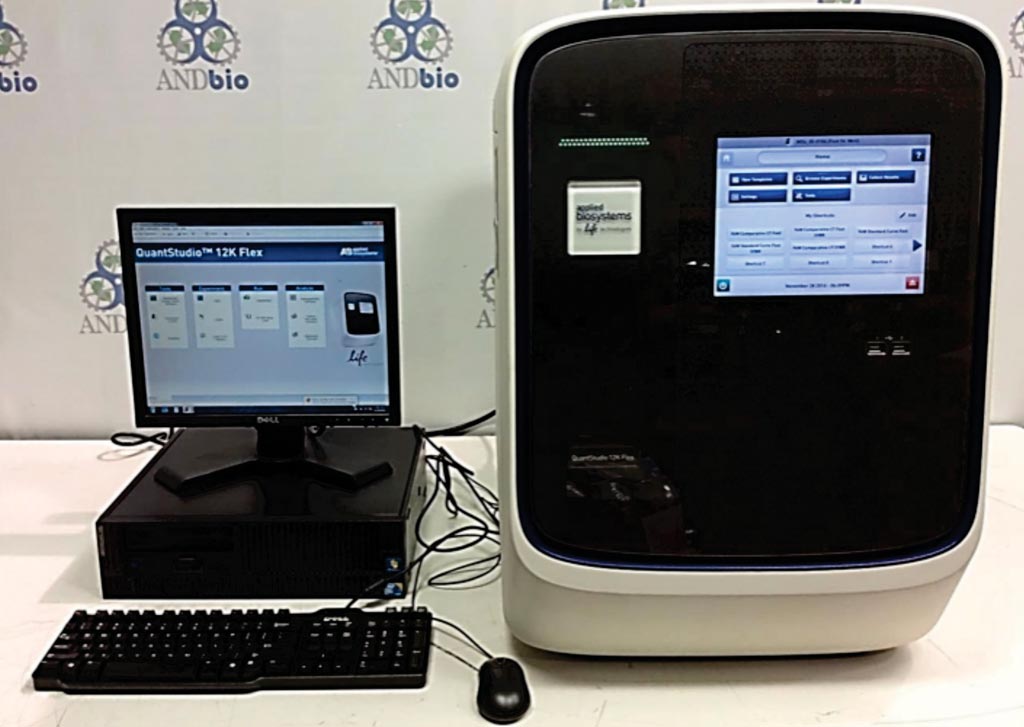Real-Time PCR Assay Developed for Detection of Candida
By LabMedica International staff writers
Posted on 09 Feb 2017
Vulvovaginal candidiasis (VVC) is a common condition characterized by vulvovaginal inflammation in combination with detection of one or more of several Candida species and after bacterial vaginosis, VVC is the second most common cause of vulvovaginitis.Posted on 09 Feb 2017
Traditional methods for Candida species identification, including culture followed by phenotypic, genotypic, or proteomic identification can be time consuming and often do not provide species-level identification. Accurate species identification can assist in effective empirical therapies since some Candida species show resistance to first line antifungals.

Image: The QuantStudio 12K Flex real-time PCR instrument (Photo courtesy of ANDbio).
Scientists at the ARUP Institute for Clinical and Experimental Pathology developed a real-time polymerase chain reaction (PCR) assay targeting the multi-copy ITS2 gene of six Candida species that together cause 97% of VVC cases (C. glabrata, C. albicans, C. tropicalis, C. parapsilosis, C. krusei, and C. dubliniensis). The assay is sensitive, provides species-level detection of the six most relevant Candida species, and has been validated with commercially available reagents found to be free of interfering fungal DNA.
The team evaluated the analytical sensitivity of the Candida spp. real-time polymerase chain reaction (PCR) assay, ITS2 gene copies in cultured C. albicans and C. glabrata strains were quantified using the PCR assay by comparison to a serial dilution of an ITS2-containing plasmid. Accuracy was assessed by testing 150 vaginal swab samples submitted for Chlamydia trachomatis and Neisseria gonorrhoeae testing with the Candida spp. real-time PCR assay and by comparing results to a panfungal, ITS-based sequencing test. The QuantStudio 12K Flex Real-Time PCR instrument was used for screening.
The investigators reported that of the 150 vaginal swabs, 52 (34.7%) were positive with the Candida spp. real-time PCR assay for C. albicans (82.7%), C. glabrata (11.5%), or for the other target Candida species (11.5%) with three samples co-positive with C. albicans. Overall, 31 (20.7%) tested positive with the panfungal ITS sequencing assay for either C. albicans (29, 93.5%) or C. glabrata (2, 5.1%). Agreement between the Candida spp. real-time PCR and panfungal ITS sequencing assays was 86.0% because the sequencing assay exhibited lower analytical sensitivity than the PCR assay. The study was published on January 22, 2017, in the journal Diagnostic Microbiology and Infectious Disease.













